
Uranium & Thorium Distribution across India & World
Subscribe to Never Miss an Important Update! Assured Discounts on New Products!
Must Join PMF IAS Telegram Channel & PMF IAS History Telegram Channel
Uranium – Distribution, Reserves and Production. Uranium in India. Nuclear Power Plants in India. Thorium – Advantages of Thorium, Thorium Distribution.
Must Read Post: Nuclear Fission | Nuclear Reactor Types
Atomic Minerals
- Uranium and Thorium are the main atomic minerals. Other atomic minerals are beryllium, lithium and zirconium.
- Uranium deposits occur in Singhbhum and Hazaribagh districts of Jharkhand, Gaya district of Bihar, and in the sedimentary rocks in Saharanpur district of Uttar Pradesh.
- But the largest source of uranium comprise the monazite sands.
- Monazite sands occur on east and west coasts and in some places in Bihar. But the largest concentration of monazite sand is on the Kerala coast.
- Over 15,200 tonnes of uranium is estimated to be contained in monazite.
- Some uranium is found in the copper mines of Udaipur in Rajasthan.
- India produces about 2 per cent of world’s uranium. The total reserves of uranium are estimated at 30,480 tonnes.
- Thorium is also derived from monozite. The other mineral carrying thorium is thorianite.
- The known reserves of thorium in India are estimated to be between 457,000 and 508,000 tonnes. Kerala, Jharkhand, Bihar, Tamil Nadu and Rajasthan are the main producers.
- Beryllium oxide is used as a ‘moderator’ in nuclear reactors. India has sufficient reserves of beryllium to meet her requirement of atomic power generation.
- Lithium is a light metal which is found in lepidolite and spodumene. Lepidolite is widely distributed in the mica belts of Jharkhand, Madhya Pradesh and Rajasthan.
- Zirconium is found along the Kerala coast and in alluvial rocks of Ranchi and Hazaribagh districts of Jharkhand.
Uranium
- Uranium is a silvery-gray metallic radioactive chemical element. It is only naturally formed in supernova explosions.
- Uranium, thorium, and potassium are the main elements contributing to natural terrestrial radioactivity.
- Uranium has the chemical symbol U and atomic number 92.
- Uranium isotopes in natural uranium are 238U (99.27%) and 235U (0.72%).
- All uranium isotopes are radioactive and fissionable. But only 235U is fissile (will support a neutron-mediated chain reaction).
- Traces of Uranium are found everywhere. Commercial extraction is possible only in locations where the proportion of Uranium is adequate. There are very few such locations.
Distribution of Uranium Across the World
- Largest viable deposits are found in Australia, Kazakhstan, and Canada.
- Olympic Dam and the Ranger mine in Southern Australia are important mines in Australia.
- High-grade deposits are only found in the Athabasca Basin region of Canada.
- Cigar Lake, McArthur River basin in Canada are other important uranium mining sites.
- The Chu-Sarysu basin in central Kazakhstan alone accounts for over half of the country’s known uranium resources.
List of Countries by Uranium Reserves and Production
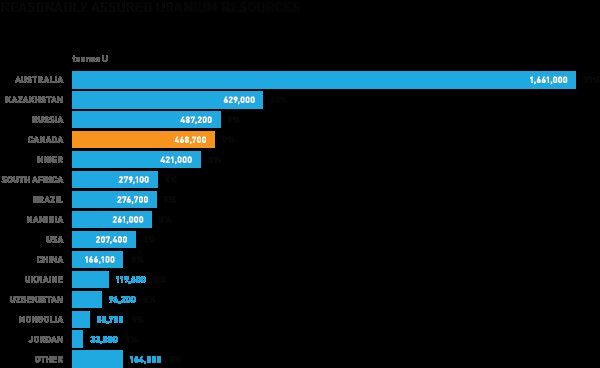
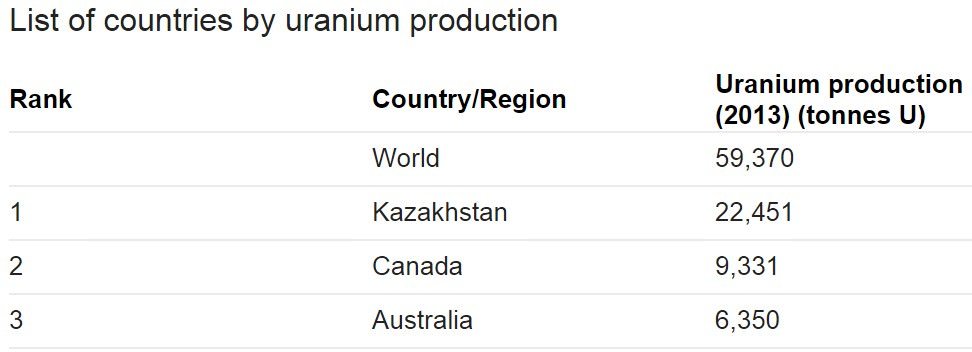
Uranium in India
- India has no significant reserves of Uranium. All needs are met through imports.
- India imports thousands of tonnes of uranium from Russia, Kazakhstan, France, and
- India is trying hard to import uranium from Australia and Canada. There are some concerns regarding nuclear proliferation and other related issues which India is trying to sort out.
- Some quality reserves were recently discovered in parts of Andhra Pradesh and Telangana between Seshachalam forest and Sresailam [Southern edge of Andhra to Southern edge of Telangana].
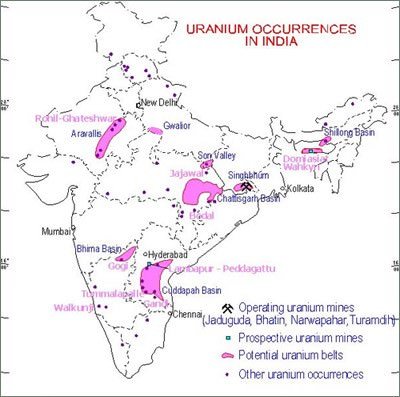
Nuclear Power Plants in India
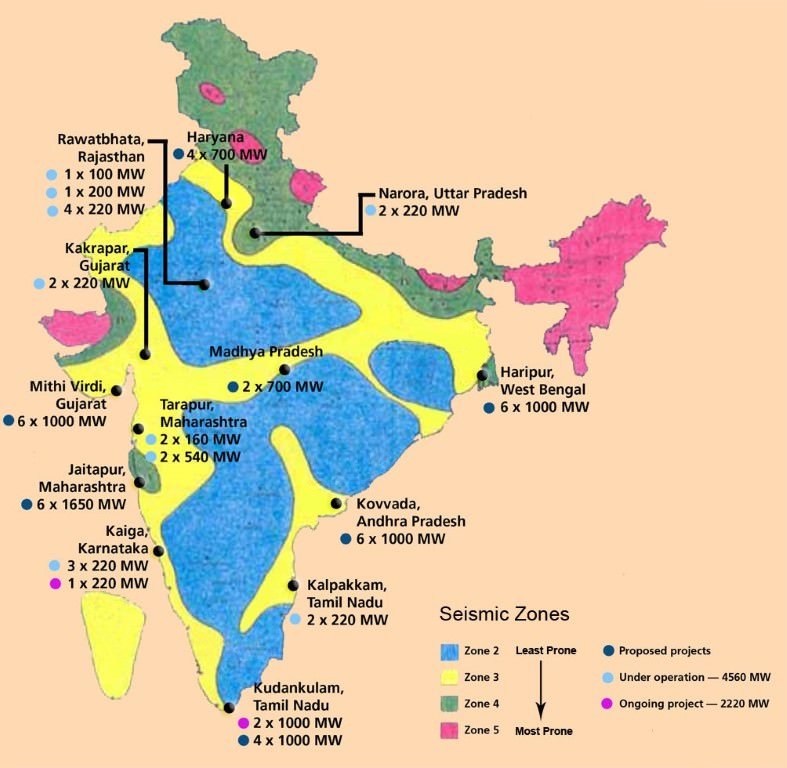
Thorium
- Thorium is a chemical element with symbol Th and atomic number 90.
- It is one of only two significantly radioactive elements that still occur naturally in large quantities [other being uranium].
- Thorium metal is silvery and tarnishes black when exposed to air.
- Thorium is weakly radioactive: all its known isotopes are unstable, with the seven naturally occurring ones (thorium-227, 228, 229, 230, 231, 232, and 234).
- Thorium-232 is the most stable isotope of thorium and accounts for nearly all natural thorium, with the other five natural isotopes occurring only in traces.
- Thorium is estimated to be about three to four times more abundant than uranium in the Earth’s crust, and is chiefly refined from monazite sands [Monazite contains 2.5% thorium][Monazite is a widely scattered on the Kerala Coast].
- Thorium is predicted to be able to replace uranium as nuclear fuel in nuclear reactors, but only a few thorium reactors have yet been completed.
Monazite – Rare Earth Metals
- Monazite is a reddish-brown phosphate mineral containing rare earth metals.
- Rare earths are a series of chemical elements found in the Earth’s crust that are vital to many modern technologies, including consumer electronics, computers and networks, communications, clean energy, advanced transportation, health care, environmental mitigation, national defense, and many others.
- Because of their unique magnetic, luminescent, and electrochemical properties, these elements help make many technologies perform with reduced weight, reduced emissions, and energy consumption; or give them greater efficiency, performance, miniaturization, speed, durability, and thermal stability.
- There are 17 elements that are considered to be rare earth elements. [Scandium, Yttrium etc. –– (names are very strange and hence I am avoiding them)]
Advantages of Thorium
- Proliferation is not easy: Weapons-grade fissionable material (U-233) is harder to retrieve safely from a thorium reactor [U-233 produced by transmuting thorium also contains U-232, a strong source of gamma radiation that makes it difficult to work with. Its daughter product, thallium-208, is equally difficult to handle and easy to detect].
- Thorium reactors produce far less waste than present-day reactors.
- Thorium produces 10 to 10,000 times less long-lived radioactive waste [minuscule waste that is generated is toxic for only three or four hundred years rather than thousands of years].
- They have the ability to burn up most of the highly radioactive and long-lasting minor actinides [fifteen radioactive metallic elements from actinium (atomic number 89) to lawrencium (atomic number 103) in the periodic table] that makes nuclear waste from Light Water Reactors a nuisance to deal with.
- Thorium reactors are cheaper because they have higher burn up.
- Thorium mining produces a single pure isotope, whereas the mixture of natural uranium isotopes must be enriched [enriching is costly] to function in most common reactor designs.
- Thorium cannot sustain a nuclear chain reaction without priming, so fission stops by default in an accelerator driven reactor.
- And five, thorium reactors are significantly more proliferation-resistant than present reactors. This is because the
The mainstreaming of thorium reactors worldwide thus offers an enormous advantage to proliferation-resistance as well as the environment.
For India, it offers the added benefit that it can enter the export market [India has the largest reserves of thorium].
Scientists predict that the impact of climate change will be worse on India. Advancing the deployment of thorium reactors by four to six decades via a plutonium market might be the most effective step towards curtailing carbon emissions.
Thorium Distribution
- Thorium is several times more abundant in Earth’s crust than all isotopes of uranium combined and thorium-232 is several hundred times more abundant than uranium-235.
- United States, Australia, and India have particularly large reserves of thorium.
- India and Australia are believed to possess more than half of world’s thorium reserves.
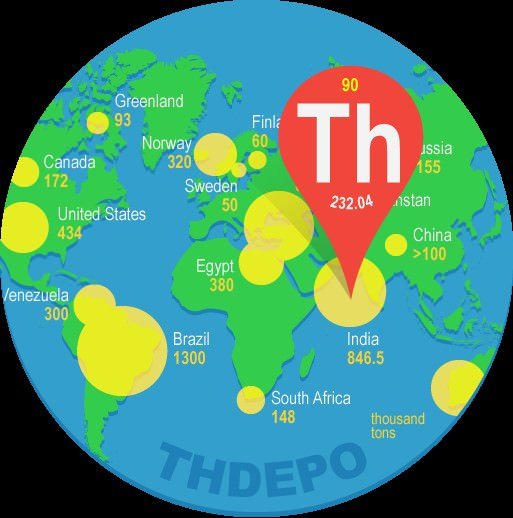
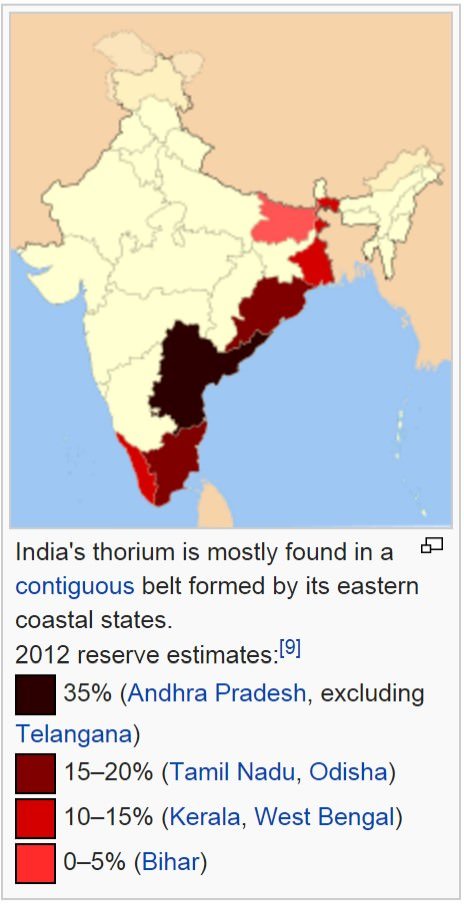
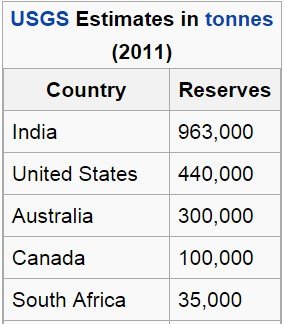
Primary References: WikipediaUranium, Thorium





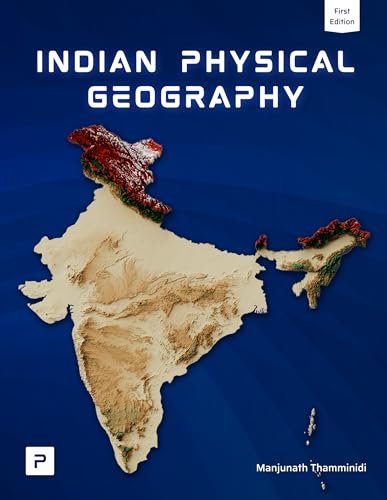
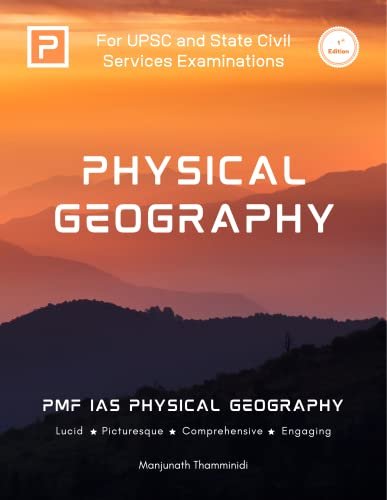
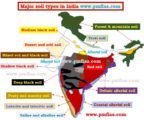

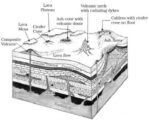
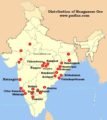


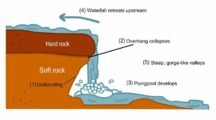
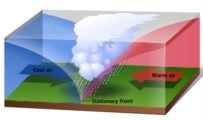




Thanks, Best Notes on Internet
Amazing information. India can capitalize on thorium reserves.
The notes are amazing on this site, but please use maps that are govt authorised. In some maps you have shown Arunanchal as disputed and in some POK and Aksai chin and China occupied parts are removed etc..Please use proper and complete map of India.
Sure. All maps will be updated in Jan 2019. Apologies for the incorrect representation.
I cannot be thankful enough for the hard work you’ve done on preparing notes. These are my one point source of whole geography in CSE 2019 and 2020. I have taken subscriptions of notes and they are so orderly and lucid to study as well as retain. This website is magna Carta of geography as you are providing such great deal of work at such nominal price. Thanks alot!!
Only U 235 fissionable and U 238 not…it is called as fertile and gets converted into Plutonium 239 in fast breeder reactor. Lot of mistakes are in text. Need to be corrected. Better take opinion from nuclear scientists in the field
Dr Chakrapani Scientist AMD DAE